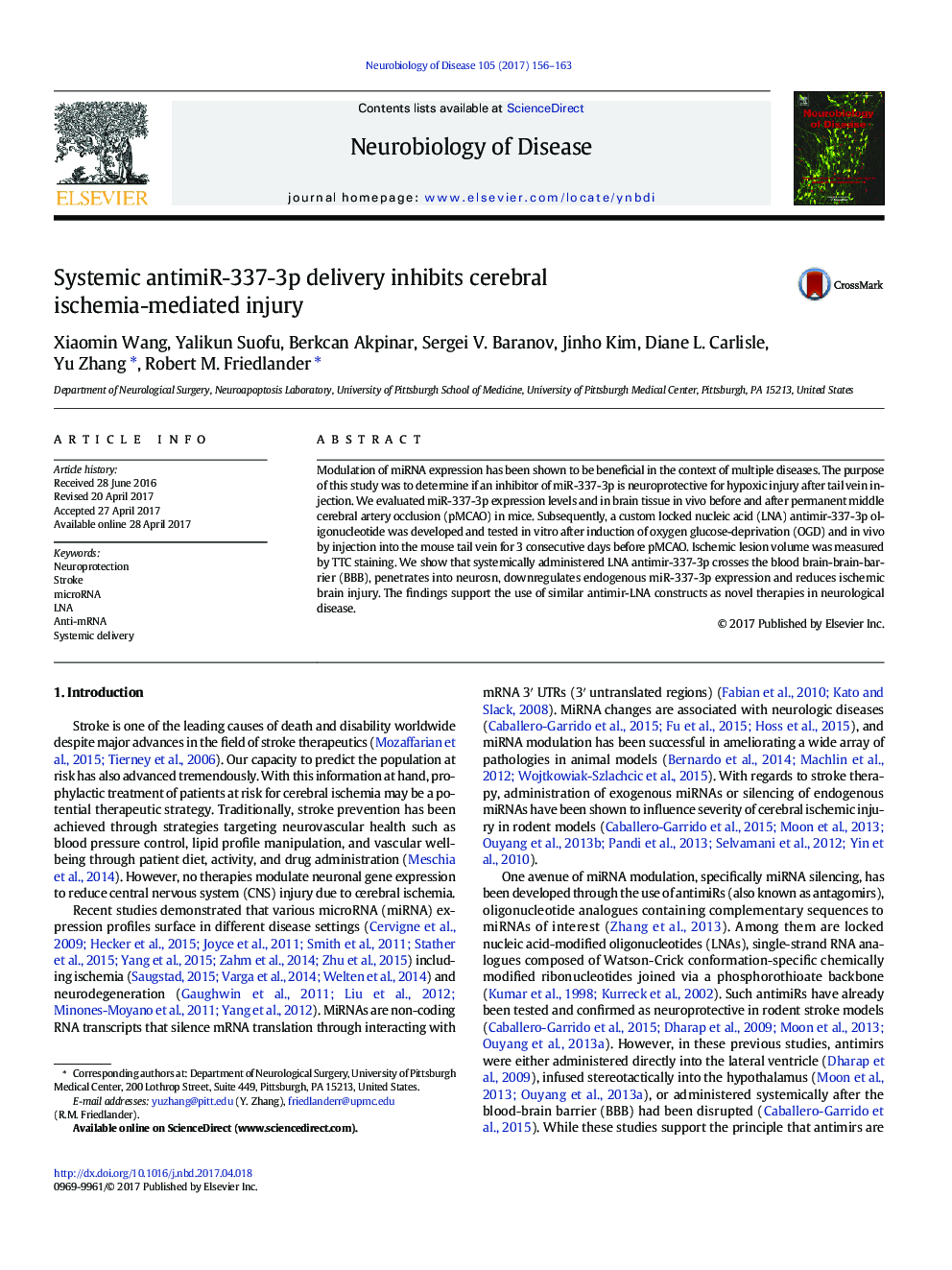| Article ID | Journal | Published Year | Pages | File Type |
|---|---|---|---|---|
| 5630642 | Neurobiology of Disease | 2017 | 8 Pages |
â¢Antimir-337-3p reduces endogenous miR-337-3p expression in vivo and in vitro.â¢Endogenous miR-337-3p expression increases following focal cerebral ischemia in mice.â¢Peripheral intravenous antimir-337-3p administration penetrates the intact BBB and distributes within neurons in the CNS.â¢Systemically delivered antimir-337-3p ameliorates ischemia-induced brain injury and neurological deficits.
Modulation of miRNA expression has been shown to be beneficial in the context of multiple diseases. The purpose of this study was to determine if an inhibitor of miR-337-3p is neuroprotective for hypoxic injury after tail vein injection. We evaluated miR-337-3p expression levels and in brain tissue in vivo before and after permanent middle cerebral artery occlusion (pMCAO) in mice. Subsequently, a custom locked nucleic acid (LNA) antimir-337-3p oligonucleotide was developed and tested in vitro after induction of oxygen glucose-deprivation (OGD) and in vivo by injection into the mouse tail vein for 3 consecutive days before pMCAO. Ischemic lesion volume was measured by TTC staining. We show that systemically administered LNA antimir-337-3p crosses the blood brain-brain-barrier (BBB), penetrates into neurosn, downregulates endogenous miR-337-3p expression and reduces ischemic brain injury. The findings support the use of similar antimir-LNA constructs as novel therapies in neurological disease.
